Stainless Steel vs Ceramic Cookware: A Comprehensive Guide for Non-Toxic Kitchen Essentials
Picture this: you’re in the cookware aisle, surrounded by shiny pots and pans, each whispering promises of culinary perfection. I’ve been there, too, weighing the choice between stainless steel and ceramic cookware. It’s not just about looks; it’s about durability, heat distribution, and, most importantly, health safety. Both have their perks and pitfalls.
In this guide, I’ll walk you through the essentials, sharing what I’ve learned on my journey to a non-toxic kitchen. Together, we’ll explore durability, cooking performance, and health impacts, helping you make a choice that aligns with your lifestyle and values. Let’s dive in and find the perfect fit for your kitchen!
Understanding Stainless Steel and Ceramic Cookware
Exploring the world of cookware can be both exciting and overwhelming. Here, we delve into the unique characteristics of stainless steel and ceramic cookware, helping you make informed choices that align with your lifestyle and values.
Defining Stainless Steel Cookware
Stainless steel cookware, crafted from a blend of metals like steel, carbon, and chromium, stands out for its durability and non-reactive nature. This means it resists rust, corrosion, and staining. I recall my first set of stainless steel pots; they were a game-changer in my kitchen. The cladded design, often including an aluminum core, enhances heat conduction, ensuring even cooking—a feature that professional chefs swear by. Its versatility and robustness make it a staple for those who love to cook with high heat and need cookware that can endure frequent use.
Defining Ceramic Cookware
Ceramic cookware, with its metal base coated in a silicon-based layer, offers a non-stick experience without the chemicals. Whether pure ceramic or metal coated with ceramic, this type of cookware provides a naturally non-stick surface. I remember transitioning to ceramic pans and how it transformed my cooking routine—less oil, easier cleaning, and a splash of color in my kitchen. Available in various colors and sizes, ceramic cookware not only promotes healthier cooking practices but also adds aesthetic value to your kitchen space.
Comparing Stainless Steel and Ceramic Cookware
Choosing between stainless steel and ceramic cookware involves considering several key factors. From durability to cost, each type offers unique benefits and challenges that can impact your cooking experience and lifestyle.
Assessing Durability
In my journey towards a non-toxic kitchen, I’ve found that stainless steel vs ceramic cookware each have their own stories to tell about durability. Stainless steel is like that old friend who’s always there—resilient and reliable. It doesn’t easily scratch or chip, standing the test of time even with daily use. Ceramic, on the other hand, is the elegant guest—beautiful but requiring a bit more care to avoid chipping. Its coating, while lovely, can wear down, reminding us that beauty sometimes comes with a delicate touch.
Heat Distribution and Cooking Performance
Cooking with stainless steel vs ceramic cookware brings its own set of experiences. Stainless steel is a powerhouse in the kitchen, offering even heat distribution that’s perfect for those high-heat moments like searing. Its cladded layers, often with an aluminum core, make it a favorite for achieving that perfect browning. Ceramic, however, invites a slower, more deliberate approach. It heats gradually but retains warmth, ideal for dishes that require gentle cooking. This makes it a wonderful choice for preserving the subtle flavors of delicate recipes.
Evaluating Non-Stick Properties
When I first explored stainless steel vs ceramic cookware, the non-stick properties were a revelation. Stainless steel, unless specially treated, tends to cling to food, encouraging the use of oils. Ceramic, however, offers a naturally non-stick surface, which feels like a breath of fresh air for low-heat cooking. This not only simplifies meal prep but also aligns beautifully with healthier cooking practices by reducing the need for excess fats.
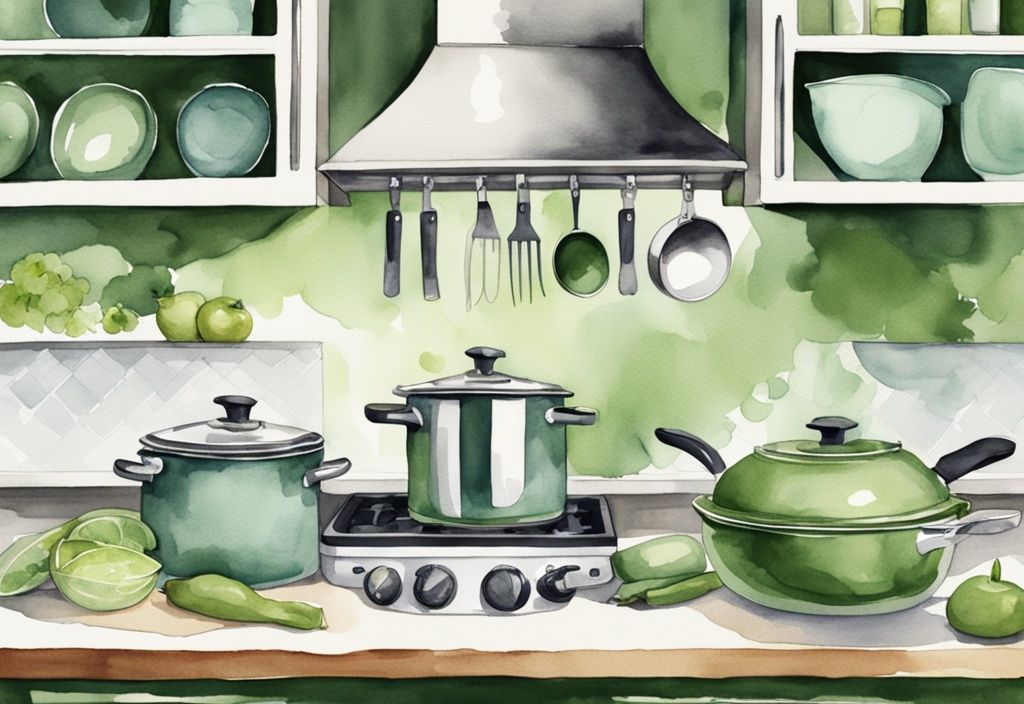
Maintenance and Cleaning
I’ve learned that the care routine for stainless steel vs ceramic cookware can be quite different. Stainless steel is forgiving, often dishwasher safe, and easy to clean, making it a practical choice for busy lives. Ceramic, while stunning, asks for a gentle touch. Hand washing and avoiding abrasive tools are key to preserving its non-stick charm. This careful maintenance ensures it remains a beautiful part of your kitchen for as long as possible.
Cost and Value Comparison
In considering the cost of stainless steel vs ceramic cookware, it’s a balance between initial expense and lasting value. Stainless steel may require a higher upfront investment, but its longevity makes it a wise choice for those looking for cookware that will last. Ceramic, though more affordable initially, might need replacing every few years. This trade-off is something to ponder, especially if you’re mindful of long-term costs and sustainability.
Health and Safety: Stainless Steel vs Ceramic Cookware
Choosing between stainless steel and ceramic cookware can be a pivotal decision for those committed to non-toxic living; understanding the safety of different cookware materials is essential, as discussed in detail on Healthline. Each has its own set of health and safety considerations, and understanding these can help you make informed choices that align with your wellness goals.
Health Risks of Stainless Steel Cookware
Stainless steel cookware is often my go-to for its reputation as a safe, non-toxic option. Its sturdy blend of steel, carbon, and chromium means it doesn’t react with food, making it a reliable companion in the kitchen. However, I’ve learned that not all stainless steel is created equal. Lower-quality versions might leach small amounts of nickel and chromium, especially with acidic dishes. While these metals are generally harmless in small doses, they can be a concern for those with allergies or sensitivities. Investing in high-quality stainless steel is a wise choice to minimize any potential risks and ensure a safe cooking experience.
Health Risks of Ceramic Cookware
Ceramic cookware is celebrated for being free from harmful chemicals like PTFE, PFAS, and PFOA, making it a popular choice for non-toxic cooking. Its non-stick surface, derived from a silicon-based coating, allows for cooking with less oil, which I find incredibly appealing. However, there are some aspects to consider. Over time, the coating can flake, especially if not cared for properly. This flaking might introduce unknown compounds into your food. To keep your ceramic cookware in top shape, follow the manufacturer’s care instructions and avoid metal utensils that could damage the coating. This simple step can help maintain its safety and longevity.
Stainless Steel and Ceramic Cookware: Environmental Impact
Exploring the environmental impact of cookware involves looking at factors like recyclability, sustainability, production processes, and lifespan. These elements play a crucial role in determining how eco-friendly your kitchen choices are.
Recyclability and Sustainability
When I first started exploring the world of cookware, I was surprised by how much stainless steel had to offer in terms of sustainability. Stainless steel cookware is incredibly recyclable. It can be melted down and reused repeatedly without losing its quality, which is a huge win for reducing waste. Its durability means you won’t be replacing it often, which is another way it helps the planet.
Additionally, did you know that certain flowers can be effective for natural pest control in your garden?
Now, let’s talk about ceramic cookware. At first glance, it seems like a great eco-friendly option because it’s made from natural materials. However, the story doesn’t end there. Despite its natural origins, ceramic cookware isn’t recyclable. Once it’s no longer usable, it often ends up in landfills. This means that even though it starts off with good intentions, it doesn’t quite match the sustainability of stainless steel.
Production and Lifespan
The journey of cookware from production to its end of life is another important aspect to consider. Stainless steel cookware is known for its impressive lifespan. With the right care, it can last a lifetime. This longevity means fewer replacements and less environmental strain from manufacturing processes.
In contrast, ceramic cookware usually lasts around 2-3 years. While it’s true that producing ceramic releases less CO2 compared to some other materials, its shorter lifespan means more frequent replacements. This cycle can negate the initial environmental benefits, making stainless steel a more sustainable choice in the long run.
Choosing the Right Cookware for Your Kitchen
Selecting the perfect cookware involves understanding your needs and preferences. Each type of cookware offers unique benefits, and knowing these can guide you to make the best choice for your health and cooking style.
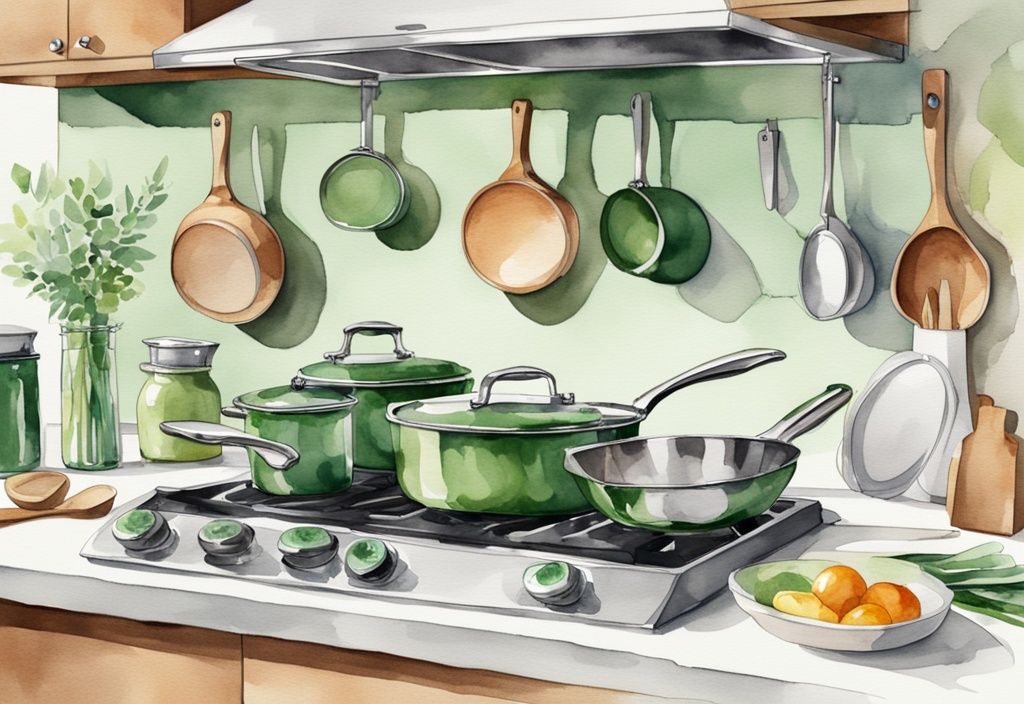
Considering Your Cooking Style and Preferences
When it comes to cooking, your style plays a pivotal role in determining the best cookware. Personally, I’ve found that stainless steel cookware is a wonderful ally for high-heat cooking techniques like searing and browning. Its sturdy build and excellent heat distribution make it a versatile choice for many dishes.
In contrast, ceramic cookware is ideal for those gentle, low-heat recipes. Its natural non-stick surface is a dream for cooking delicate foods like eggs and pancakes, minimizing the need for oil and ensuring easy release. This has been a game-changer for me on busy mornings!
Budget Considerations
Budget is often a major consideration. While ceramic cookware might initially appeal with its lower price, it’s worth noting that it may need replacing more often due to its shorter lifespan. On the flip side, investing in stainless steel cookware can be more costly upfront but offers incredible long-term value. Its durability has made it a staple in my kitchen, proving to be a wise investment over the years.
Maintenance Preferences
How much time and effort you’re willing to spend on maintenance can also influence your choice. I’ve always appreciated stainless steel cookware for its low-maintenance nature. Most pieces are dishwasher safe, and their resistance to scratches and stains means they stay looking new with minimal effort.
Meanwhile, ceramic cookware requires a bit more care. Gentle hand washing is often recommended to maintain its non-stick surface. For those who cherish non-stick properties and don’t mind the extra care, ceramic can be a delightful option.
Addressing Health Concerns
Health is at the forefront of many cookware decisions. Stainless steel cookware is generally safe and non-toxic, though it’s wise to be cautious about potential metal leaching with lower-quality options.
On the other hand, ceramic cookware provides a chemical-free alternative to traditional non-stick surfaces, free from PTFE, PFAS, and PFOA. However, it’s essential to consider the risk of unknown compounds in the coating and potential flaking. Balancing these health factors with your cooking needs is key to making an informed choice.
Recommended Stainless Steel and Ceramic Cookware Brands
Exploring the world of cookware can be both exciting and overwhelming. With so many options, it’s essential to find brands that align with your values and cooking needs. Here, we delve into the top stainless steel and ceramic cookware brands that offer quality, performance, and a touch of eco-consciousness.
Top Stainless Steel Cookware Brands
When it comes to stainless steel cookware, three brands have consistently earned my trust: All-Clad, Cuisinart, and T-fal. Each of these brands brings something unique to the table, making them worthy of consideration.
All-Clad has become a staple in my kitchen, thanks to its remarkable craftsmanship and durability. This brand is cherished by both professional chefs and home cooks, offering a cladded design with an aluminum core that ensures excellent heat conduction. With proper care, All-Clad’s stainless steel cookware can last a lifetime, making it a wise investment.
Cuisinart strikes a perfect balance between quality and affordability. Their innovative designs cater to both beginners and seasoned cooks. What I love most is their dishwasher-safe options, which simplify my daily routine without compromising on performance.
T-fal is a go-to for those seeking budget-friendly options without sacrificing quality. Their stainless steel cookware excels in even heat distribution and often includes thoughtful features like ergonomic handles and measurement markings, enhancing my cooking experience.
Top Ceramic Cookware Brands
In the realm of ceramic cookware, GreenLife, Cuisinart, and T-fal stand out for their commitment to non-toxic and eco-friendly cooking solutions.
GreenLife has captured my heart with its dedication to health-conscious cooking. Their ceramic cookware is free from harmful chemicals like PTFE and PFOA, offering a safe, non-stick alternative. The vibrant designs and easy-to-clean surfaces make them a joy to use in my kitchen.
Cuisinart continues to impress with its ceramic cookware range, blending non-stick benefits with stylish aesthetics. Designed to withstand everyday use, Cuisinart’s ceramic options maintain their non-stick properties, making them a practical choice for those focused on health.
T-fal provides ceramic cookware that is both affordable and efficient. Their innovative Thermo-Spot technology ensures optimal cooking temperatures, enhancing my culinary creations. T-fal’s ceramic cookware is perfect for anyone seeking a balance between performance and price.
Conclusion: Stainless Steel vs Ceramic Cookware
Choosing between stainless steel and ceramic cookware can feel like a personal journey, one that reflects your cooking style and values. Both have their unique charms and quirks, and understanding these can guide you to the right choice for your kitchen.
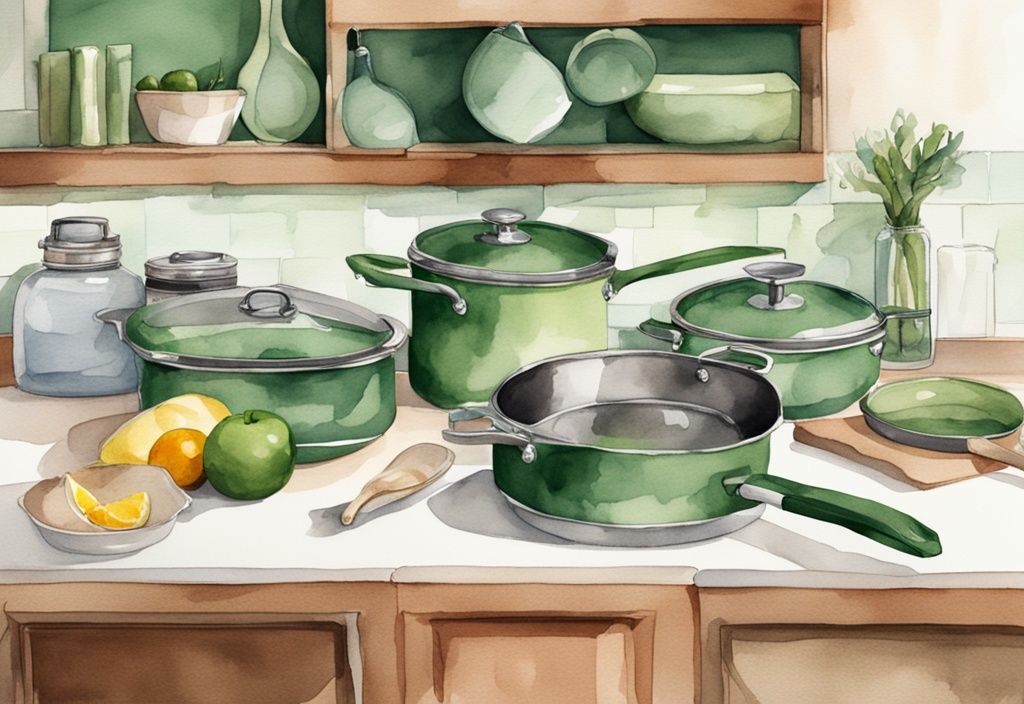
Stainless steel cookware has been my steadfast companion in the kitchen for years. Its durability is unmatched, and it thrives under high heat, making it perfect for searing and browning. I love how it stands up to the rigors of daily cooking without losing its shine. However, it’s true that it doesn’t have natural non-stick properties. This means I often find myself using a bit more oil, which is a small price to pay for its longevity. Investing in stainless steel is like committing to a lifelong kitchen partner that won’t let you down.
Ceramic cookware, on the other hand, has its own allure. Its natural non-stick surface is a dream for those who, like me, enjoy low-fat cooking. Plus, it’s a chemical-free alternative to traditional non-stick pans, which aligns perfectly with my commitment to non-toxic living. The variety of colors and styles can brighten up any kitchen, adding a touch of personality. But, I’ve learned to handle it with care, as it can be more fragile, prone to chipping and cracking. While it might not last as long as stainless steel, its ease of use is a delightful trade-off.
Ultimately, the choice between stainless steel and ceramic cookware is deeply personal. If durability and high-heat cooking are your priorities, stainless steel might be your best bet. But if you cherish non-stick convenience and ease of cleaning, ceramic could be your new best friend. Consider your cooking habits, budget, and maintenance preferences to find the perfect match for your kitchen.
Frequently Asked Questions
Choosing between stainless steel and ceramic cookware can feel overwhelming. Each option has its unique strengths, and understanding these can help you make a choice that aligns with your cooking style and values.
Is stainless steel cookware better than ceramic?
In my kitchen, stainless steel shines when it comes to durability and handling high-heat cooking. It’s like a trusty friend you can rely on for those intense searing sessions. On the other hand, ceramic cookware is perfect for those gentle, non-stick cooking moments. It really depends on what you need most in your culinary adventures.
How long does ceramic cookware last compared to stainless steel?
Ceramic cookware, with its gentle touch, tends to last around 2-3 years. It’s a bit like a fleeting romance—wonderful while it lasts. Stainless steel, however, is more of a lifelong companion, enduring with proper care. This makes it a more sustainable choice in the long run.
Can ceramic cookware be used on high heat?
I’ve learned through trial and error that ceramic cookware isn’t suited for high heat. It truly excels at low to medium temperatures, preserving its non-stick magic. Pushing it to high heat can compromise its integrity, so it’s best to keep things gentle.
Is stainless steel cookware safe for health?
Stainless steel is generally safe, but it’s important to choose high-quality options. Lower-quality stainless steel might leach metals like nickel and chromium over time. Investing in good quality ensures your meals remain both delicious and safe.
What is the best type of cookware for non-stick cooking?
For non-stick cooking, ceramic cookware is my go-to. It offers natural non-stick properties without the worry of harmful chemicals like PTFE, PFAS, and PFOA. This makes it a healthier choice for both you and the planet.
Hi, I’m Olivia Green, the voice behind nontoxicways.com. I’m passionate about helping you make the shift to a healthier, non-toxic lifestyle without feeling overwhelmed. I love sharing my personal journey, from small changes to big transformations, along with practical tips that make it all feel doable. My goal is to inspire and guide you toward a lifestyle that benefits both your well-being and the planet. Let’s take this journey together, one simple step at a time!
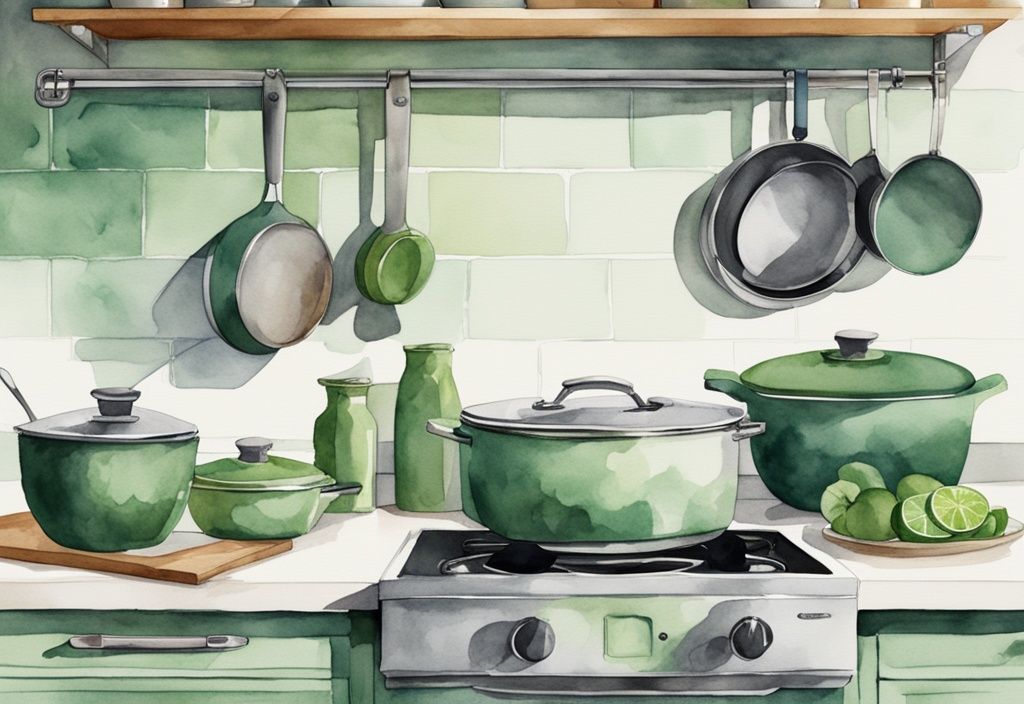
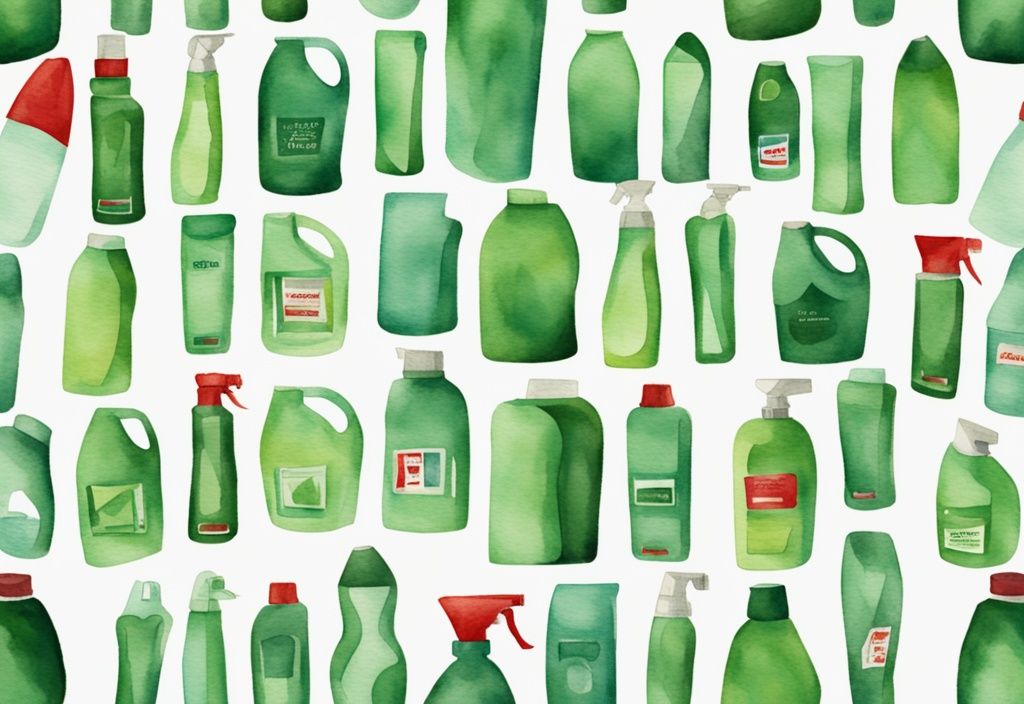


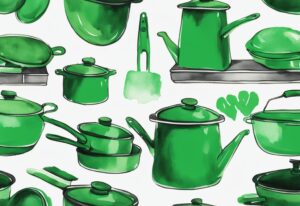


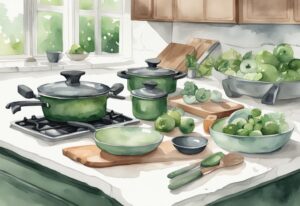
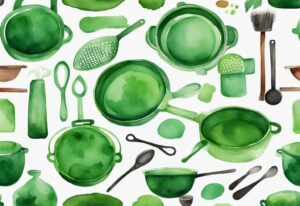





Post Comment